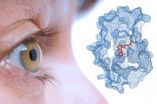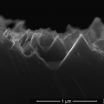(Press-News.org) (MEMPHIS, Tenn. – June 19, 2014) St. Jude Children's Research Hospital scientists have discovered how an important "on" switch is attached to the machinery that cells rely on to adapt thousands of proteins to meet changing conditions. The research appears in the current issue of the journal Cell.
The switch is a small protein called NEDD8. Problems with NEDD8 have been associated with several cancers, developmental disorders and infectivity of the human immunodeficiency virus (HIV), which causes AIDS. Drugs that target NEDD8 are in anti-cancer clinical trials. The ability of HIV to evade the anti-viral immune response depends in part on the ability of the virus to hijack the NEDD8 machinery.
NEDD8 is also a key component of the machinery that cells use to adapt to changing conditions. Just as individuals adapt to changes in their environment by donning gloves, boots, hats and other accessories, cells adapt by "accessorizing" proteins to modify their function.
NEDD8 is a specialized accessory. It functions as the "on" switch for accessorizing 10 to 20 percent of the thousands of proteins that do the work of cells. Those accessories mark some proteins for elimination, others for a change in function and others for relocation to different parts of the cell. Until now, however, how NEDD8 slipped into position was unknown.
Researchers showed how part of the machinery for accessorizing proteins, a component called cullin-RING, is first modified by NEDD8. The addition of NEDD8 transforms the ability of cullin-RING to accessorize other proteins. Those proteins are involved in important biological functions such as cell division, immune response and embryonic development.
"This discovery is a major advance in understanding the machinery cells use to regulate an astonishingly vast number of proteins they depend on as well as the diseases that arise when the system malfunctions," said corresponding author Brenda Schulman, Ph.D., a member of the St. Jude Department of Structural Biology and a Howard Hughes Medical Institute (HHMI) investigator.
Schulman and her colleagues study the machinery that manages the accessorizing process, whether the accessory is NEDD8 or a different small protein called ubiquitin. Ubiquitin accessorizes proteins though a process known as ubiquitination. Cullin-RING, which NEDD8 accessorizes, is a major command center of ubiquitination.
This study builds on an observation first author Daniel Scott, Ph.D., made shortly after joining Schulman's laboratory in 2006. Scott, an HHMI research specialist III, showed that while ubiquitin could be coaxed into binding to and accessorizing cullin-RING, NEDD8 was the preferred partner.
Scott used a technique called X-ray crystallography to capture a crystal structure that explained why. In the process, investigators determined for the first time that different components of the ubiquitination machinery work cooperatively to align NEDD8 and cullin-RING. That alignment promotes the transfer of NEDD8 rather than ubiquitin to the proper site on cullin-RING. The transfer of NEDD8 allows other proteins to be accessorized with ubiquitin.
The mechanism outlined in this research establishes a paradigm for understanding protein regulation in cells, Schulman said. "This research sets the stage for broadly understanding this key aspect of protein regulation in cells," Scott said.
INFORMATION:
The study's other authors are Vladislav Sviderskiy and Shein Ei Cho, both of St. Jude; Julie Monda, formerly of St. Jude and now of the Massachusetts Institute of Technology, Cambridge, Mass.; and John Lydeard and J. Wade Harper, both of Harvard Medical School, Boston.
The research was funded in part by a Cancer Center Support Grant (CA021765) from the National Cancer Institute at the National Institutes of Health (NIH); grants (GM069530, AG011085) from the National Institute of General Medical Sciences at the NIH; the Howard Hughes Medical Institute, Damon Runyon Cancer Research Foundation and ALSAC.
St. Jude Media Relations Contacts
Carrie Strehlau
(desk) 901-595-2295
(cell) 901-297-9875
carrie.strehlau@stjude.org
Summer Freeman
(desk) 901-595-3061
(cell) 901-297-9861
summer.freeman@stjude.org
Mechanism discovered for attaching an 'on' switch that helps cells accessorize proteins
St. Jude Children's Research Hospital scientists advance understanding of how cells manage their vast array of proteins and how system failures can lead to cancer and other diseases
2014-06-19
ELSE PRESS RELEASES FROM THIS DATE:
Drug shows promise for the first time against metastatic melanoma of the eye
2014-06-19
NEW YORK, NY (June 19, 2014) — For the first time, a therapy has been found that can delay progression of metastatic uveal melanoma, a rare and deadly form of melanoma of the eye.
Results from a multicenter clinical trial show that a new drug called selumetinib increases progression-free survival, the length of time during and after treatment that a patient with metastases lives with the disease without it progressing. The findings were published today in the online edition of JAMA, the Journal of the American Medical Association.
"Although the effects of the drug were ...
RNA aptamers targeted to plasminogen activator inhibitor
2014-06-19
New Rochelle, NY, June 19, 2014—Plasminogen activators are proteins involved in the breakdown of blood clots, and an elevated level of plasminogen activator inhibitor-1 (PAI-1) is associated with an increased risk for clotting and cardiovascular disease. No PAI-1 inhibitors are currently available for clinical use, but a novel therapeutic approach using a targeted RNA aptamer drug that has been shown to block PAI-1 activity and prevent PAI-1-associated vascular events is described in Nucleic Acid Therapeutics, a peer-reviewed journal from Nucleic Acid Therapeutics. The ...
Humans & monkeys of one mind when it comes to changing it
2014-06-19
Covert changes of mind can be discovered by tracking neural activity when subjects make decisions, researchers from New York University and Stanford University have found. Their results, which appear in the journal Current Biology, offer new insights into how we make decisions and point to innovative ways to study this process in the future.
"The methods used in this study allowed us to see the idiosyncratic nature of decision making that was inaccessible before," explains Roozbeh Kiani, an assistant professor in NYU's Center for Neural Science and the study's lead author. ...
Scientists identify link between stem cell regulation and the development of lung cancer
2014-06-19
UCLA researchers led by Dr. Brigitte Gomperts have discovered the inner workings of the process thought to be the first stage in the development of lung cancer. Their study explains how factors that regulate the growth of adult stem cells that repair tissue in the lungs can lead to the formation of precancerous lesions.
Findings from the three-year study could eventually lead to new personalized treatments for lung cancer, which is responsible for an estimated 29 percent of U.S. cancer deaths, making it the deadliest form of the disease.
The study was published online ...
Evolution of equine influenza led to canine offshoot which could mix with human influenza
2014-06-19
Equine influenza viruses from the early 2000s can easily infect the respiratory tracts of dogs, while those from the 1960s are only barely able to, according to research published ahead of print in the Journal of Virology. The research also suggests that canine and human influenza viruses can mix, and generate new influenza viruses.
Canine influenza is a relatively new disease. The first appearance is believed to be in 2003, as a result of direct transfer of a single equine influenza virus to dogs in a large greyhound training facility and was subsequently carried to ...
Who's your daddy? UCF team programs computer to find out
2014-06-19
A University of Central Florida research team has developed a facial recognition tool that promises to be useful in rapidly matching pictures of children with their biological parents and in potentially identifying photos of missing children as they age.
The work verifies that a computer is capable of matching pictures of parents and their children. The study will be presented at the nation's premier event for the science of computer vision - the IEEE Computer Vision and Pattern Recognition conference in Columbus, Ohio, which begins Monday, June 23.
Graduate Student ...
New mobile app provides faster, more accurate measurement of respiratory rate
2014-06-19
(Vancouver – June 19, 2014) – A new mobile app developed by researchers at the Child & Family Research Institute (CFRI) at BC Children's Hospital and the University of British Columbia can measure respiratory rate in children roughly six times faster than the standard manual method.
According to findings published this month in PLOS One, RRate can reliably measure respiratory rate in an average of 9.9 seconds. Currently, health care workers typically measure respiratory rate by counting a patient's breaths for 60 seconds using a stop watch.
"Mobile phones are changing ...
Finding the Achilles' Heel of ovarian tumor growth
2014-06-19
A team of scientists, led by principal investigator David D. Schlaepfer, PhD, professor in the Department of Reproductive Medicine at the University of California, San Diego School of Medicine report that small molecule inhibitors to a protein called focal adhesion kinase (FAK) selectively prevent the growth of ovarian cancer cells as tumor spheroids.
The findings come in a pair of studies published online this week in the journals Gynecologic Oncology and Molecular Cancer Therapeutics.
Ovarian cancer is a leading cause of female cancer death in the United States. On ...
Researchers develop genetic control mechanism for major livestock pest
2014-06-19
Researchers from North Carolina State University have developed a technique to control populations of the Australian sheep blowfly – a major livestock pest in Australia and New Zealand – by making female flies dependent upon a common antibiotic to survive.
Dr. Max Scott, professor of entomology at NC State, and his research team genetically modified lines of female Australian sheep blowflies (Lucilia cuprina) so that they required doses of tetracycline in order to live. Female blowflies that did not receive the antibiotic died in the late larval or pupal stages, before ...
One step to solar-cell efficiency
2014-06-19
HOUSTON – (June 19, 2014) – Rice University scientists have created a one-step process for producing highly efficient materials that let the maximum amount of sunlight reach a solar cell.
The Rice lab of chemist Andrew Barron found a simple way to etch nanoscale spikes into silicon that allows more than 99 percent of sunlight to reach the cells' active elements, where it can be turned into electricity.
The research by Barron and Rice graduate student and lead author Yen-Tien Lu appears in the Royal Society of Chemistry's Journal of Materials Chemistry A.
The more ...
LAST 30 PRESS RELEASES:
Making lighter work of calculating fluid and heat flow
Normalizing blood sugar can halve heart attack risk
Lowering blood sugar cuts heart attack risk in people with prediabetes
Study links genetic variants to risk of blinding eye disease in premature infants
Non-opioid ‘pain sponge’ therapy halts cartilage degeneration and relieves chronic pain
AI can pick up cultural values by mimicking how kids learn
China’s ecological redlines offer fast track to 30 x 30 global conservation goal
Invisible indoor threats: emerging household contaminants and their growing risks to human health
Adding antibody treatment to chemo boosts outcomes for children with rare cancer
Germline pathogenic variants among women without a history of breast cancer
Tanning beds triple melanoma risk, potentially causing broad DNA damage
Unique bond identified as key to viral infection speed
Indoor tanning makes youthful skin much older on a genetic level
Mouse model sheds new light on the causes and potential solutions to human GI problems linked to muscular dystrophy
The Journal of Nuclear Medicine ahead-of-print tip sheet: December 12, 2025
Smarter tools for peering into the microscopic world
Applications open for funding to conduct research in the Kinsey Institute archives
Global measure underestimates the severity of food insecurity
Child survivors of critical illness are missing out on timely follow up care
Risk-based vs annual breast cancer screening / the WISDOM randomized clinical trial
University of Toronto launches Electric Vehicle Innovation Ontario to accelerate advanced EV technologies and build Canada’s innovation advantage
Early relapse predicts poor outcomes in aggressive blood cancer
American College of Lifestyle Medicine applauds two CMS models aligned with lifestyle medicine practice and reimbursement
Clinical trial finds cannabis use not a barrier to quitting nicotine vaping
Supplemental nutrition assistance program policies and food insecurity
Switching immune cells to “night mode” could limit damage after a heart attack, study suggests
URI-based Global RIghts Project report spotlights continued troubling trends in worldwide inhumane treatment
Neutrophils are less aggressive at night, explaining why nighttime heart attacks cause less damage than daytime events
Menopausal hormone therapy may not pose breast cancer risk for women with BRCA mutations
Mobile health tool may improve quality of life for adolescent and young adult breast cancer survivors
[Press-News.org] Mechanism discovered for attaching an 'on' switch that helps cells accessorize proteinsSt. Jude Children's Research Hospital scientists advance understanding of how cells manage their vast array of proteins and how system failures can lead to cancer and other diseases




